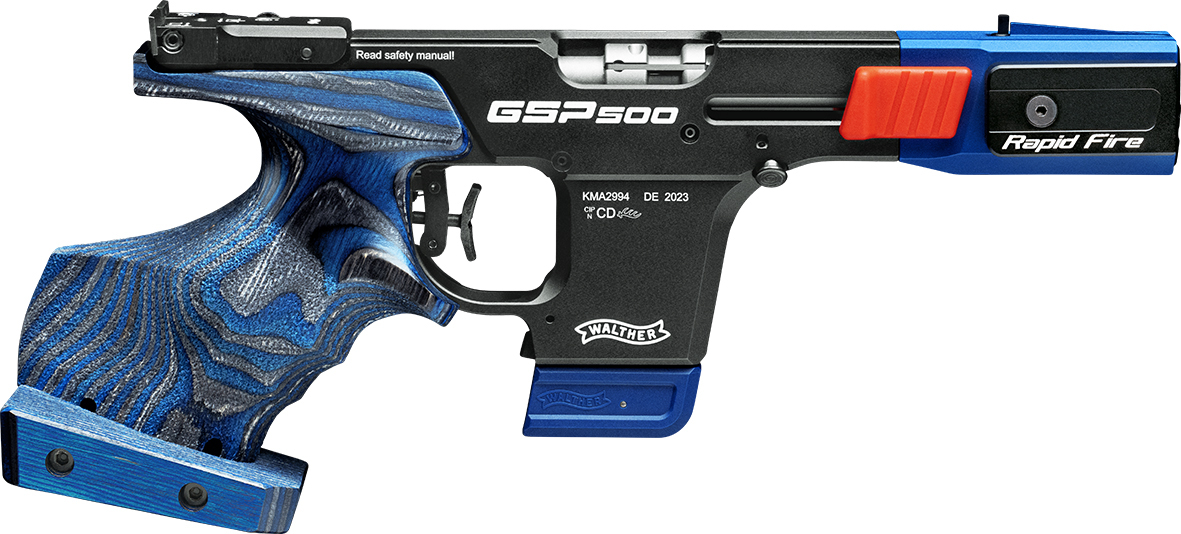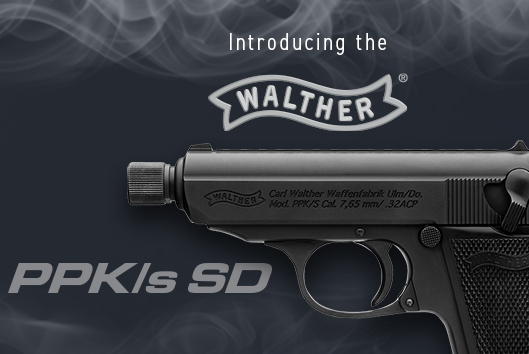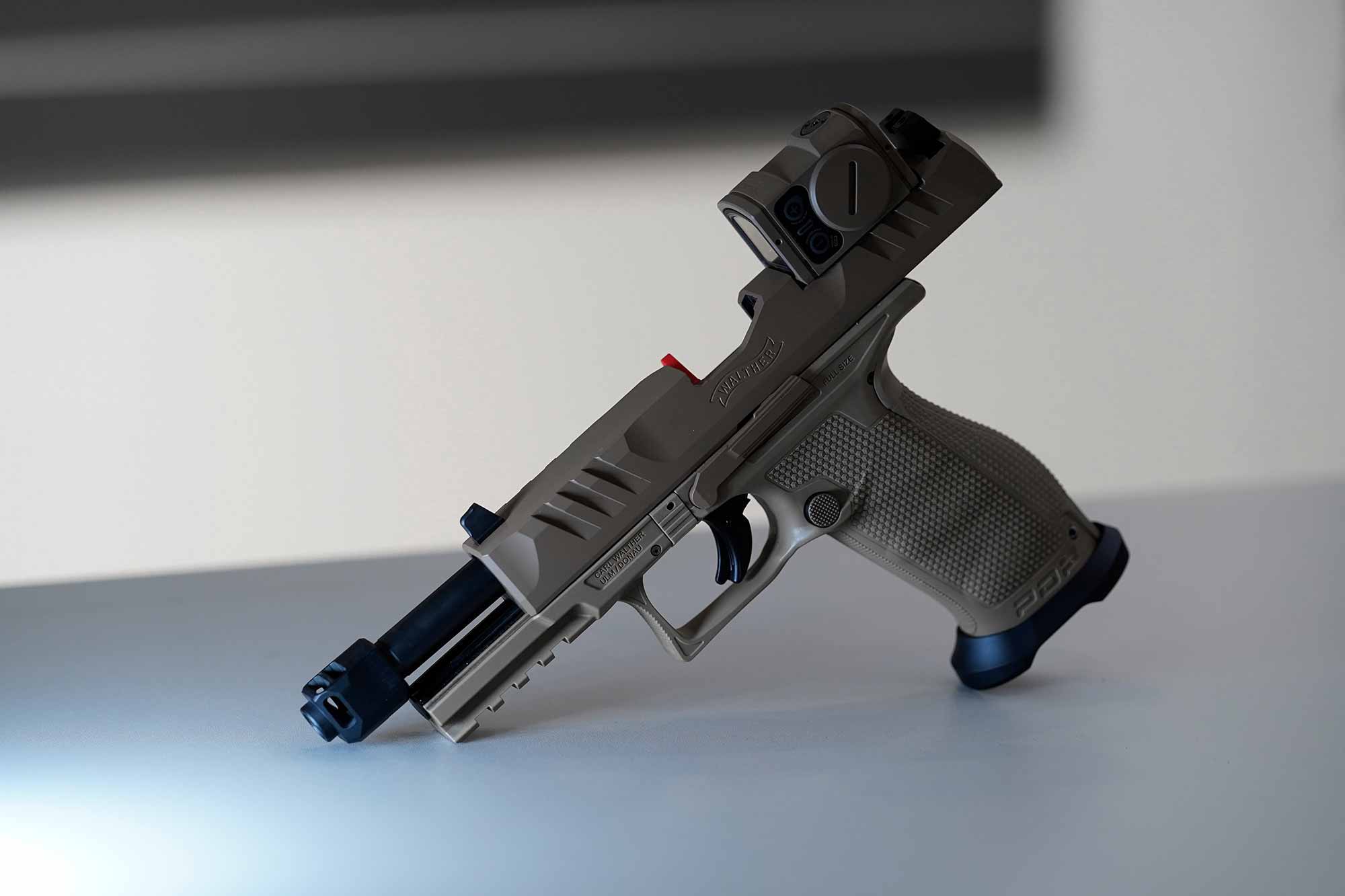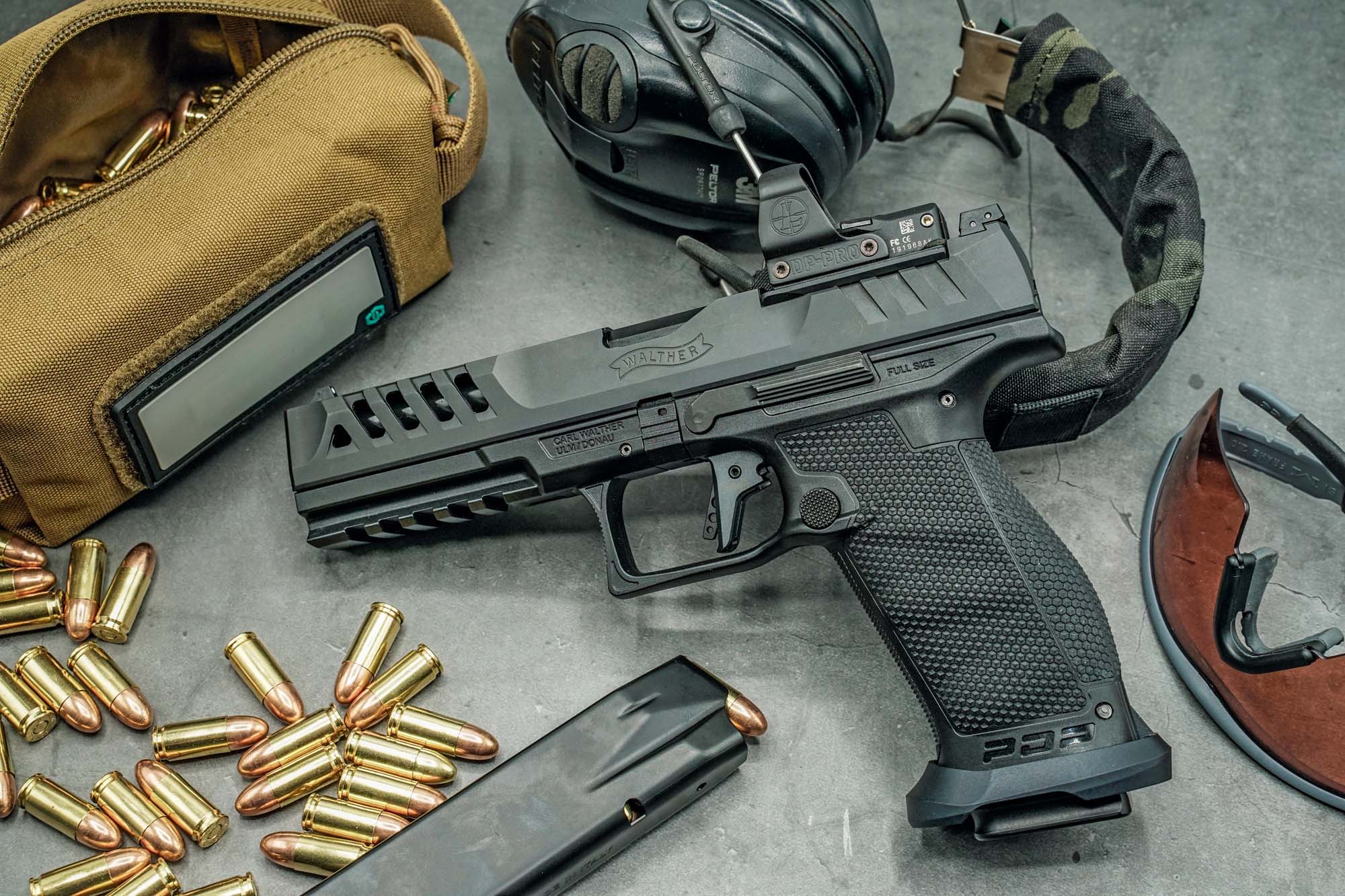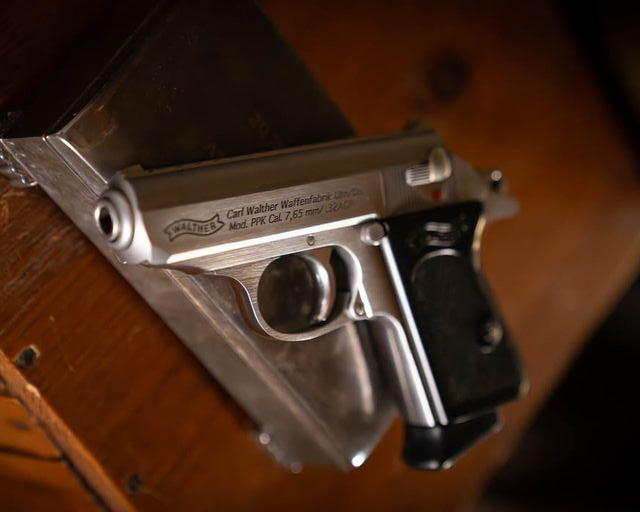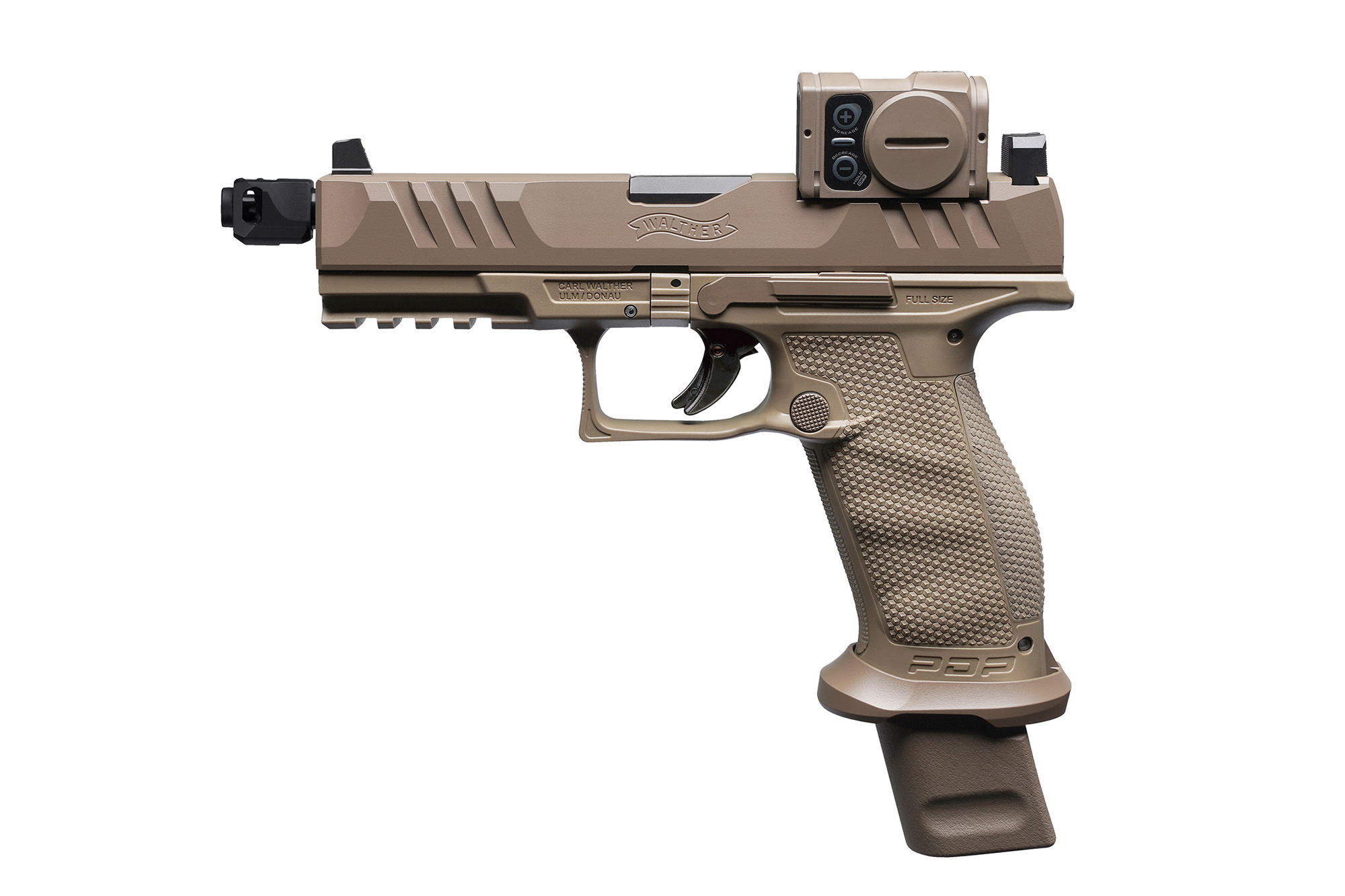Those responsible at Carl Walther in Ulm expressed their confidence in the in-house design team led by Thomas Bretschneider and Mike Pries. Based on the current rules and regulations of the International Sporting Sport Federation (ISSF) and the German Shooting Association (Deutscher Schützenbund), they once again went through the specifications to find out where and how the well-known weak points of the original GSP could be improved. Even the somewhat hapless Walther SSP had its merits, but it was perhaps too futuristic?
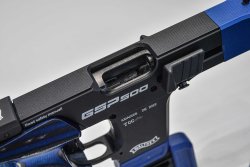
The GSP always suffered from being a compromise between the permitted maximum length of 300 mm, a barrel that was as long and accurate as possible, and a sufficiently supportive grip. If the latter fit, to start at the rear, the magazine sticking out in front of the trigger guard did not leave much space for the barrel, which always remained between 85 mm and 115 mm on the GSP. Now it's no less than 123 mm on the GSP500, which should probably translate into tighter shot groups, even with the .32 caliber version, which often requires more space. If the finals at World Cups and Olympics are all about hits and misses these days, and a hit has to be at least a "10.2" in tenths of a ring, then the shooter with the most accurate pistol wins (provided he also hits where he intended to hit, of course...).
What's different? The plus points of the new Walther GSP500
...at least according to the data sheets published at IWA – an independent test report will follow as soon as the pistol is delivered. The GSP500, they say, follows human anatomy and biomechanics without compromise:
Anatomic grip: an ergonomically perfected grip with adjustable palm rest. The receiver is low in the grip, which minimizes climbing up when firing. However, the grip angle of 54° to the barrel axis can no longer be changed, as is the case with the SSP – in practice, the factory setting is often the only option. Those who wanted a somewhat flatter or steeper angle to the barrel axis commissioned a custom grip from a third-party supplier.
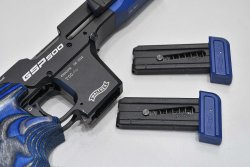
In general, the overall balance of a competition pistol often determines whether its owner becomes one with it and whether it automatically points to the target as an extension of the hand. Walther calls this "Advanced Weight Engineering": "The design of the GSP500 follows exact target specifications in terms of overall mass, center of gravity, mass distribution and balance of the gun. And this is individually adjustable, for example, through various add-on weight options. The center of gravity of the GSP500 was placed on the magazine well for balanced weight distribution. 4 spring-loaded tungsten weights of 20 g each and another 4 tungsten weights (in .22 caliber) in the front sight base allow fine-tuning of the balance."
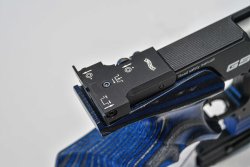
A target pistol should be designed to function as easily as possible, i.e., even under competition stress. It is true that a manual bolt catch was again dispensed with in favor of consistent firing behavior over all five scoring shots of a magazine. But there is another way (as with the SSP): the bolt cocking handles are mounted on both sides. If one grips the bolt and pulls it back completely, one of the two bolt retaining buttons can be engaged in this position and the bolt remains open. If the bolt is to be closed again, it is pulled back completely – the respective bolt holder is thus deactivated. The GSP500 also has a manual safety on the left side behind the trigger. This is a feature that offers some additional safety in competition, but is a decisive factor especially when exporting to the USA.
What does Walther say about the trigger mechanism of the GSP500?
First of all, here are all the adjustable trigger features of the Walther GSP500 at a glance:
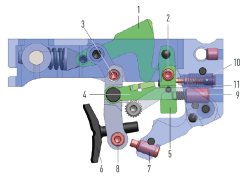
- 1 Hammer
- 2 Frst stage travel adjustment screw
- 3 Trigger bar adjustment screw
- 4 Trigger bar
- 5 Sear
- 6 Trigger shoe
- 7 Trigger stop set screw
- 8 Length of pull adjustment screw
- 9 Set screw for trigger pull adjustment
- 10 First stage weight adjustment screw
- 11 Second stage weight adjustment screw
This is where the old GSP has always been able to score, and the GSP500? "The GSP500 trigger breaks 'crisp as glass' at the precisely defined take-up point. Absolutely even. Even after many thousands of rounds. That's made possible by a sophisticated pivot and reset positioning of the components and the use of the highest quality materials. A minimum of mechanical components and the extremely short lock time of 0.0031 s result in maximum action quietness".
The trigger is adjustable in length, height and also shoe angle, making it individually perfectly adjustable for any finger length and shape. With this trigger system, the take-up force and break force are infinitely adjustable, as are the trigger travel, the trigger stop, and the position and angle of the finger position. All forces and travel can therefore be individually adjusted, all for a completely controlled firing sequence. The trigger group can be replaced, which also worked for the GSP. So you can use the “Gebrauchssportpistole” ("Utility Sports Pistol" – yes, that's the meaning of the GSP acronym) for other disciplines, such as standard pistol or Olympic rapid fire pistol. Or you can have a back-up trigger with you, which is waiting in the case of an emergency. However, a separate rapid-fire version of the GSP500 is planned for the fall of 2022 anyway.
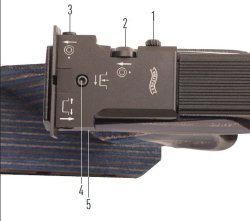
As with the Walther SSP, the sights consist of a completely interchangeable rear sight on which all r,elevant adjustments can be made – in addition to elevation and windage adjustment, the width and depth of the rear sight notch can also be changed.
Each click of the set screws, which are operated by a hex key, changes the point of impact by 0.5 cm at 25 meters. And if you need to use your gun for a different shooting discipline, you can simply change the entire rear sight. Which of course admittedly is also a cost issue (unit price not yet known).
The front sight has a width of 3.8 mm. By the way, according to the manual, the integrated recoil reduction system is located below the rear sight, hidden under the grip – it dampens the movement of the bolt to the rear. You can apparently adjust it depending on cartridge energy and desired feedback behavior when firing by changing the spring tension.
Walther GSP500 technical specs and prices for both calibers
| Model: | GSP500 | GSP500 |
| Caliber: | .22l.r. | .32 S&W Long WC |
| Price
(MSRP): | 2,399
euro | 2,399
euro |
| Dimensions (LxHxW): | 300x140x50
mm approx. | 300x140x50 mm approx. |
| Weight (with magazine + 2 20 g weights): | 1,040 g | 1,150 g |
| Barrel Length: | 123 mm | 123 mm |
| Sight Radius: | 220 mm | 220 mm |
| Magazine Capacity: | 6 rounds max. | 5 rounds max. |
| Trigger Pull Weight: | 1,000 g | 1,000 g |
| Front Sight Width: | 3,8 mm | 3,8 mm |
| Rear Sight: | Interchangeable, elevation and windage adjustable | Interchangeable, elevation and windage adjustable |
We hope to receive more information about the GSP500 from the Walther team during the course of this IWA OutdoorClassics and will also provide photos as soon as possible. But we can already say that the new Walther GSP500 is likely to be one of the highlights of this year's show – and we will wait to see how the neo-classic from Ulm is received by the "target group", the sports, standard and rapid-fire shooters.
More information on the target pistols from the manufacturer Carl Walther can be found on the company's website.



